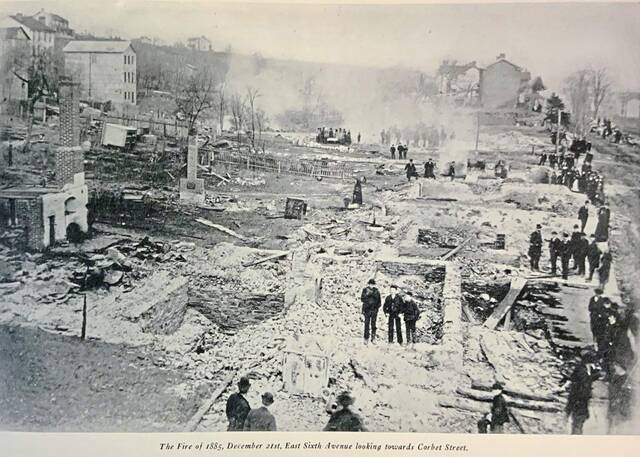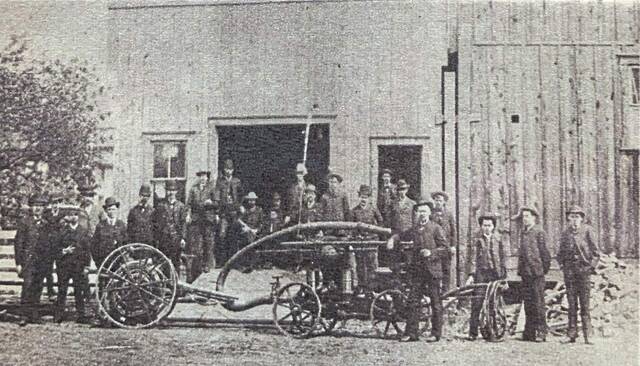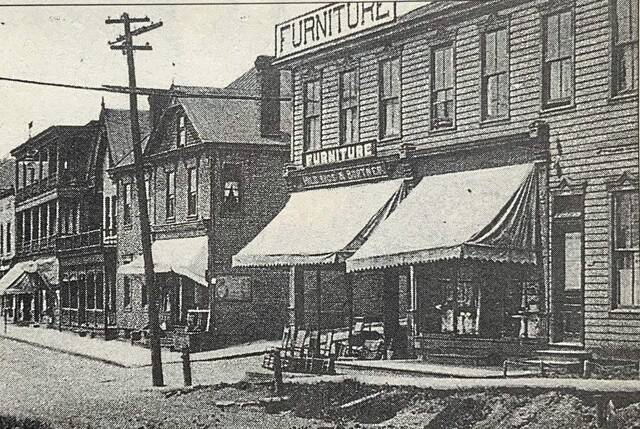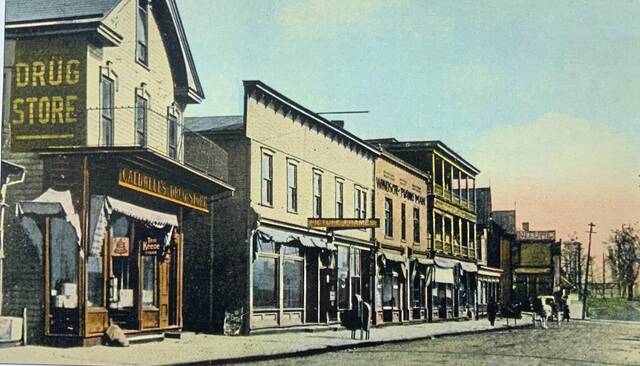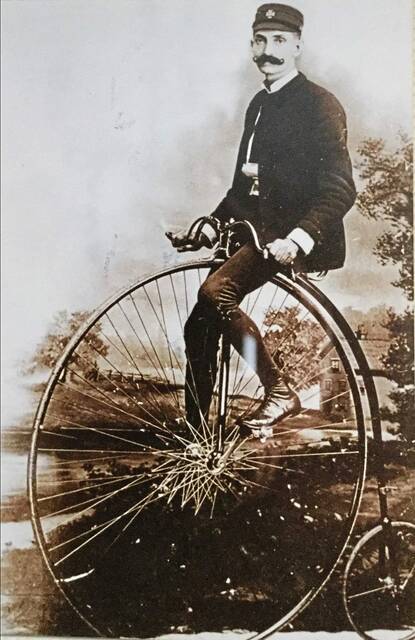Remember When: Tarentum fire destroyed 8 buildings along East Sixth Avenue in 1885
One of the most disastrous fires in Tarentum’s history occurred on Dec. 21, 1885, and led to the organization of the borough’s first fire department.
The fire originated in the office of Patterson and Travis, an insurance agency in a wood-frame building where the present Tarentum Post Office stands.
A pedestrian discovered the fire in the early-morning hours on a cold and blustery day with strong winds, which spread the fire rapidly. The adjacent building, also a wooden structure, housing a bakery and a hat store, was quickly engulfed by flames.
Ingram’s Jewelry Store, the home and offices of D. McCullough, and Goodwin’s Hardware and Tin Store were destroyed in rapid succession. The owner of Ingram luckily had time to roll his safe and display cases out the back door to save a large portion of his stock.
The next building destroyed housed a telegraph and telephone office. The fire finally was contained at the Camp Brothers Store, a general store stocked with dry goods, groceries and clothing.
The fire burned everything in its path along East Sixth Avenue between Corbet and Dickey streets. In all, eight buildings were destroyed, including six commercial buildings and two residences.
The damage from the fire was estimated at $50,000 in 1885. Today, that amount would equate to nearly $1.8 million.
It was determined a gas leak started the fire. In the 1880s, natural gas was used in Tarentum for heating and lighting. Investigators believed a faulty regulator or valve on the gas line was to blame.
There were no fire companies in Tarentum in 1885, so residents fought the fire by carrying buckets of water from nearby wells, which had little impact on the blaze.
Further damage was prevented by accessing the Camp Brothers’ warehouse and rolling barrels of salt down Corbet Street, then scattering it on the roof of Esler’s Drug store.
The day after the fire, a group of 50 residents and businessmen met to determine what actions should be taken to prevent or contain such fires. They met at the James Staley Roller Rink which was then located at the site of the current Manos Theater building. James Staley, a local druggist and businessman, conducted the meeting.
The decision was made to set up a firefighting organization of volunteers, which they named the Independent Pump and Hose Company. The initial dues collected were 50 cents per member.
Using money from donations, they acquired a hand pumper for $475 from a firm in Syracuse, N.Y. It was Tarentum’s first piece of firefighting equipment.
The Independent Pump and Hose Company was the predecessor to other Tarentum fire companies. Highland Hose Company was organized in 1894. Summit Hose and Eureka Hose companies were organized in 1906.
Membership in the Independent Pump and Hose Company declined to six members in 1906, when it disbanded.
Remove the ads from your TribLIVE reading experience but still support the journalists who create the content with TribLIVE Ad-Free.

